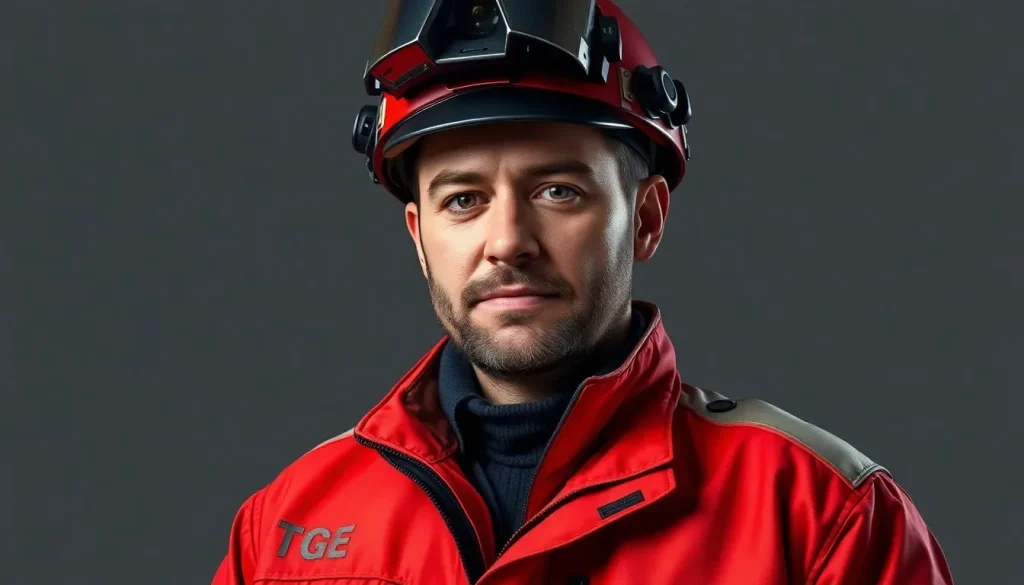Man TGE leader in emergency response solutions

The growing demands of emergency services across Europe have created a need for reliable and versatile vehicles. In this context, the MAN TGE has emerged as a leader, combining cutting-edge technology with adaptability to meet various medical and rescue needs. With its robust design, this vehicle is not just a mode of transport; it’s a lifeline in critical situations. Let’s delve deeper into what makes the MAN TGE a preferred choice for emergency services.
MAN TGE's leadership in the emergency sector
With 1,800 units ordered across twelve European countries, the MAN TGE is proving its worth in the emergency services landscape. Currently, more than 700 ambulances are already in operation on the continent, showcasing the trust placed in this vehicle by various healthcare systems.
The reliability and versatility of the MAN TGE are recognized internationally. Its robust build and thoughtful design make it the preferred base for ambulances and rescue vehicles. Customization is a key feature, allowing easy adaptation for each client through partnerships with specialized bodybuilders.
Emergency services appreciate the high level of customization that the MAN TGE offers. It can be outfitted to include:
- Stretchers
- Defibrillators
- IV stands
- Negative pressure systems for sanitary safety
This flexibility ensures that each unit meets the specific needs of patients and medical teams efficiently.
The vehicle's digital cockpit enhances driving in emergency situations, while its adjustable air suspension improves accessibility. Moreover, the 4x4 traction ensures excellent mobility in diverse weather conditions, and the driver assistance systems help reduce fatigue during long shifts.
Global presence in rescue services
The MAN TGE is utilized in various countries, including Italy, Spain, France, Denmark, Poland, the United Kingdom, and the Netherlands. For instance, in Italy, the manufacturer Olmedo has produced 70 MAN TGE ambulances equipped with negative pressure systems. France has nearly 300 active units, while the NHS in the UK has committed to 275 units under a framework agreement.
Local cooperation plays a vital role in adapting the MAN TGE to meet unique requirements. Companies like Falck, one of the largest providers in Europe, have adopted this strategy, employing MAN TGE vehicles in their emergency services across Denmark, Germany, Sweden, and Poland.
In Romania, a project for 480 ambulances has been awarded, with several units already delivered and the rest expected by year-end. The Netherlands also operates over 60 MAN TGE vehicles.
Technological advancements in the MAN TGE
The MAN TGE is not just a vehicle; it is a technological marvel designed with the latest advancements to optimize emergency responses. Some key technological features include:
- Advanced navigation systems to ensure quick routing to emergency sites
- Integrated communication systems for seamless coordination with hospitals
- Real-time monitoring systems for health status during transport
These features collectively enhance the operational efficiency of emergency services, ensuring critical care is provided swiftly and effectively.
Customizable solutions for varying needs
One of the standout features of the MAN TGE is its high degree of customization. This is crucial for emergency services that vary in their operational requirements. The ability to tailor features means that:
- Ambulances can be specialized for pediatric, geriatric, or trauma care.
- Each vehicle can be equipped based on regional healthcare protocols.
- Emergency responders can choose specific technologies that align with their operational needs.
This adaptability is essential, as each medical emergency can require different approaches based on location, patient needs, and available resources.
Future developments: MAN TGE 2025
As MAN continues to innovate, the upcoming MAN TGE 2025 is set to redefine standards in emergency services. Expected improvements include:
- Enhanced fuel efficiency and lower emissions
- More advanced driver assistance features
- Integration of AI for predictive maintenance
These advancements will not only improve the performance of the vehicle but also ensure better sustainability in emergency operations.
The role of emergency leaders
In the context of emergency services, the leadership roles are critical. Leaders in this field are responsible for:
- Developing strategies for effective emergency response
- Coordinating between various agencies and departments
- Implementing training programs for emergency responders
Understanding these roles is essential for optimizing the use of vehicles like the MAN TGE in real-world situations.
For a closer look at the MAN TGE and its capabilities, you can check out the following video:
The MAN TGE stands out as a holistic solution for emergency services, providing flexibility to meet diverse healthcare needs. Its combination of robust technology and adaptability ensures that rescue services can rely on it to perform effectively, even in the most challenging scenarios.
For more current updates, check our social media channels on Facebook, Instagram, and YouTube.




Leave a Reply